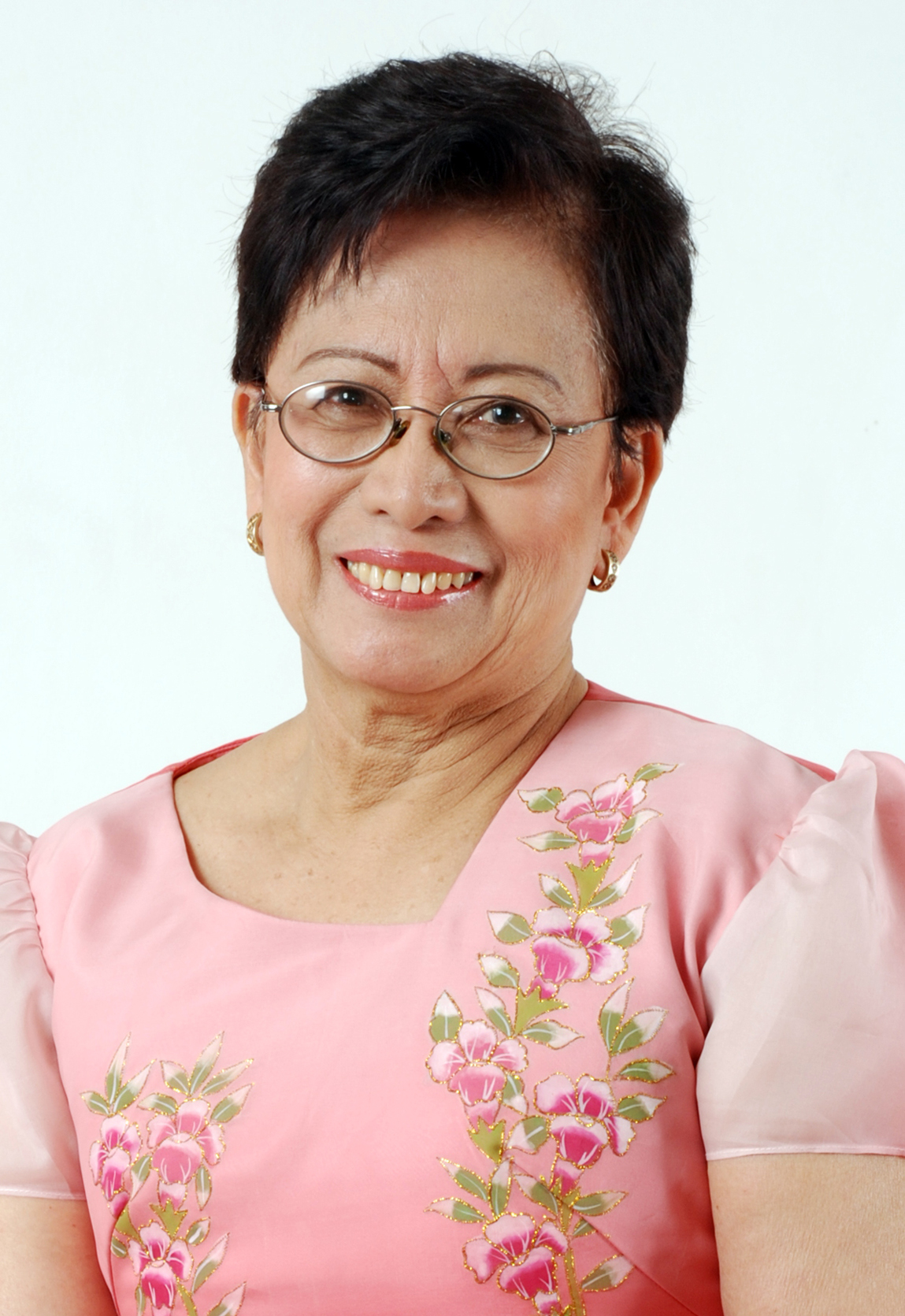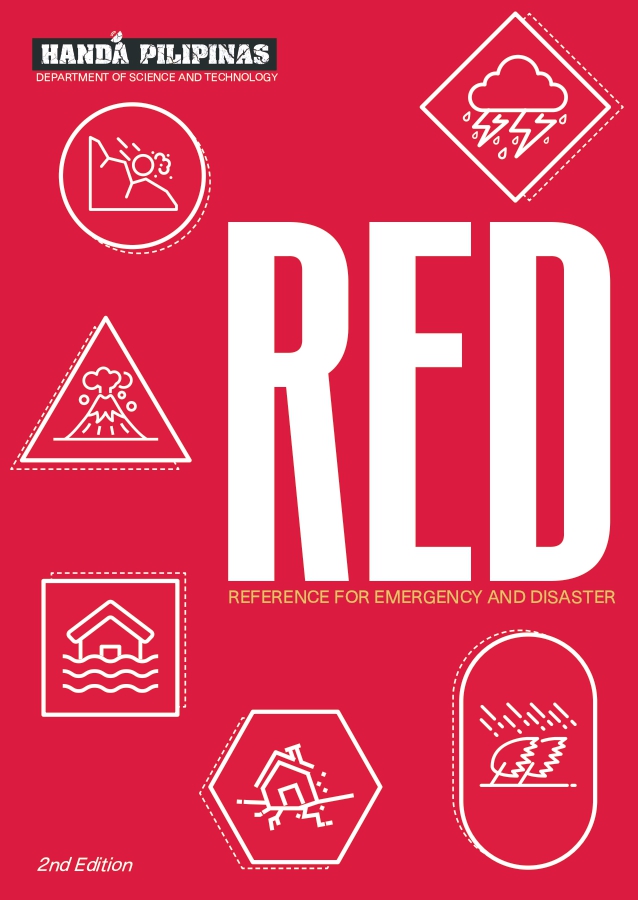The DOST Secretary
|
Dr. RENATO U. SOLIDUM, JR. Department of Science and Technology 2022-present |
|
Past DOST Secretaries
2010-2016 ENGR. MARIO G. MONTEJO
 |
ENGR. MARIO G. MONTEJO Mario G. Montejo served as Secretary of the Department of Science and Technology from 2010 to 2016. |
Secretary Montejo, a mechanical engineer by profession and an innovator, believes that the use of science and technology is always a sound development model for the improvement of the individual and society in terms of improved processes, products, services.
With his substantial background in engineering design and innovation spanning more than 20 years, he was selected as the 2014 UP Alumni Association (UPAA) Most Distinguished Alumnus, and 2011 Distinguished Alumnus in Science and Technology. In 2010, the UP College of Engineering has named him one of the “100 Outstanding Alumni Engineers of the Century” during the Centennial celebration of the University of the Philippines.
Before joining the government service, Secretary Montejo was president of several engineering related firms along with the more recent ecotourism-related company.
His motto, ‘Local technology works!’ affirms a belief in the creativity of Filipinos particularly the Philippine scientific community.
2001-2010 DR. ESTRELLA F. ALABASTRO
 |
DR. ESTRELLA F. ALABASTRO Estrella Fagela Alabastro, was first appointed as Secretary of the Department of Science and Technology in March 2001 and was reappointed on August 30, 2004. She was the first woman to get the DOST portfolio. |
Dr. Alabastro was DOST Undersecretary for Research and Development in 1995-1998; Executive Director of the Philippines Council for Industry and Energy Research and Development (1991-1995); Dean of the College of Home Economics of the University of the Philippines (1984-1990), among other designations.
A registered Chemical Engineer and Career Executive Service Officer, Dr. Alabastro earned her B.S. Chemical Engineering cum laude at the University of the Philippines-Diliman. She went to Rice University in Houston, Texas for her M.S. and Ph.D. in Chemical Engineering.
Dr. Alabastro was editor of several food-related publications, done extensive research works, principal author and co-author of numerous research papers and handbooks on food engineering and processing.
"Nina" or "EFA"--- as fondly called by friends and colleagues--- is married to Edgardo Garcia Alabastro and they have three children.
1999-2001 DR. FILEMON A. URIARTE JR.
 |
DR. FILEMON A. URIARTE JR. Dr. Filemon A. Uriarte Jr. served as Science Secretary from 1999 to 2001. Guided by his vision of “a competent and competitive science and technology with a social conscience,” The Science department launched technology transfer projects to benefit farmers and entrepreneurs in support of the administration’s poverty alleviation program. |
He rolled out different flagship programs. Among the research and development projects completed under his leadership are capsules from carageenan, wind energy conversion, packaging technology for buko pie and biocermaic materials for prosthetics and implants. The Science department also implemented integrated programs on coconut, biotechnology and furniture; productivity enhancements for the mango and saba industries, and seaweed seed stocks improvement.
1994-1999 DR. WILLIAM G. PADOLINA
 |
DR. WILLIAM G. PADOLINA A secretary of the Department of Science and Technology from 1994 to 1998, Dr. Padolina implemented a development agenda that included technological advances in agriculture, manufacturing and services, education program focused on technological systems and industry application, and improvement of research management system. |
Under his watch, the department's development of science and technology human resources gained attention through the Engineering and Science Education Project, the Science and Technology Scholarship Act, and the creation of four new campuses of the Philippine Science High School system (Diliman, Mindanao, Western Visayas, Eastern Visayas). He also implemented the PhNet project, the country's first link to the Internet.
Dr. Padolina shepherded the Magna Carta for science and technology personnel through the legislative mill until it became Republic Act 8439 in 1997. While serving as secretary, he was admitted as member of the New York Academy of Science, and was listed in the Who's Who of the Asia-Pacific Rim. He has received many awards and distinctions including Academician of NAST, Outstanding Young Scientist (1982), and Ten Outstanding Young Men (1985).
1992-1994 DR. RICARDO T. GLORIA
 |
DR. RICARDO T. GLORIA As Science and Technology secretary, Dr. Ricardo Gloria emphasized science and technology extension and commercialization programs. During his tenure, a memorandum of agreement was signed with UP Los Baños for the establishment of the Science and Technology Park that was inaugurated in 1993. |
He worked for the establishment of the first science centrum in Manila, which became a model of science centrums that followed in Iloilo, Cagayan de Oro, Bulacan and Zamboanga. In 1994, the Science and Technology Scholarship Act was passed, which enabled economically disadvantaged but deserving students to obtain college education in science and technology fields. Dr. Gloria was born on April 3, 1940, in Oroquieta, Misamis Occidental.
1989-1992 DR. CEFERINO L. FOLLOSCO
 |
DR. CEFERINO L. FOLLOSCO Dr. Follosco has diverse expertise having graduate degrees in mechanical, electrical, agricultural, and management engineering. He Implemented a modernization strategy for the country's industrial and agricultural systems through the adoption of "leading edge technologies". The strategy included selection of sectors on the basis of potentials in terms of increased production, increased value added, and capacity to expand local production. |
He was chairman of the Science and Technology Coordinating Council created under A.O. 123, and led the formulation of Action Plans and Implementing Programs for the leading edges.
Under his watch, a comprehensive Science and Technology Master Plan (STMP) was drawn focusing on three major strategies: a) Modernization of the production sector through masive technology transfer; b) upgrading of R&D activities; and c) development of infrastructures, institution building, manpower development, and development of S&T culture.
Under the STMP, he initiated programs such as the Comprehensive Technology Transfer Program, Manufacturing Productivity Extension for export modernization, and Technology Business Incubators. He also worked for the inclusion of S&T Parks, Technology Incubators, and R&D activities in the government's investment Priorities Plan. Congress approved the establishment of S&T Provincial Centers nationwide.
The Ateneo de Davao Universivity conferred to him the degree of Doctor of Humanities honoris causa, which the University of the Philippines also awarded him the degree of Doctor of Laws honoris causa.
Dr. Follosco was born on February 3, 1931 in Lanao del Sur.
1986-1989 DR. ANTONIO V. ARIZABAL
 |
DR. ANTONIO V. ARIZABAL Dr. Arizabal assumed the top National Science and Technology Authority (NSTA) position following EDSA 1 and led its transition into the Department of Science and Technology in 1986. He guided the reorganization and staffing of DOST's different institutions, and reviewed their functions. |
Dr. Arizabal put emphasis on technology transfer and commercialization. Food and Nutrition Research Institute's supplementary food formulations were used extensively to feed 80,000 malnourished kids in Negros Occidental during this time.
He implemented contract research agreements and commercialization or technology transfer agreements with private companies on technologies such as improved alcohol production, extraction of essential oils, coconut water beverage production, large capacity lumber kilns, etc.
Dr. Arizabal obtained his BS Chemistry cum laude from the University of the Philippines, and M.S. and Ph.D. in Metallurgy from the Carnegie Institute of Technology.
Dr. Antonio V. Arizabal was bon on October 13, 1932 in Manila.
1981-1986 DR. EMIL Q. JAVIER
 |
DR. EMIL Q. JAVIER In 1981, Dr. Javier initiated the first comprehensive Five-Year Indicative Plan for Science and Technology highlighted by demand-pull strategy in selecting research projects wherein end-users' demands guided the choice of National Science Development Board (NSDB) projects. |
He was at the helm of NSDB when it was reorganized into the National Science and Technology Authority (NSTA) in 1982. Under his leadership, the S&T Council system was created. He also initiated the establishment of science communities in Los Banos, Bicutan, Quezon City and Manila.
During his time, the Scientific Career System was created and E.O. 901 defined its implementing rules and regulations.
Meanwhile, E.O. 889 issued in 1983 established six new research institutes in Diliman and Los Banos broadening NSTA's capability to undertake research in basic sciences.
Dr. Javier obtained his B.S. in Agriculture from the University of the Philippines, M.S. from University of Illinois, and Ph.D. from Cornell University. He is a recipient of numerous awards including the Ten Outstanding Young Men, UPLB Outstanding Alumnus, and NAST Academician.
Dr. Javier was born on September 11, 1940 in Sta. Cruz, Laguna.
1976-1981 DR. MELENCIO S. MAGNO
 |
DR. MELENCIO S. MAGNO He was chairman of the National Science Development Board (NSDB) in 1976 to 1981. He obtained a B.S. in Mining Engineering, and M.S. in Physics from the University of the Philippines (UP). His interests spanned seismology, metrology, meteorology, physics and held administrative positions in these fields in UP. |
He was appointed Minister of the NSDB from 1978 to 1981. He later became President of the Science Foundation of the Philippines, Vice President of the National Academy of Science and Technology, and President of the National Reseach Council of the Philippines.
During his administration, the Philippines for the first time sealed a working relationship with an eastern block country through the Philippine-Romanian Agreement on S&T Cooperation.
Dr. Magno emphasied the importance of developing the country's S&T manpower, and supported undergraduate and graduate science scholarship programs. He also supported the UP Science Education Center in the writing of science textbooks, Summer Science Instiute for teachers to improve science and mathematics instruction, supplied laboratory equipment under the Science Equipment Development Program, and implemented the Balik Scientist Program. He pushed for the establishment of the National Academy of Science and Technology.
Under Dr. Magno, the NSDB pursued mission-oriented R&D programs in different sectors.
Dr. Magno was bon on May 24, 1920 in Muñoz, Nueva Ecija.
1970-1976 GEN. FLORENCIO A. MEDINA
 |
GEN. FLORENCIO A. MEDINA He was the Chairman of the National Science Development Board (NSDB) from 1970 to 1976. He went to the University of the Philippines for his B.S. and M.S. degrees in Chemistry, and was also a Doctor of Science. Before his stint at NSDB, he was Chief of the Research and Development Center of the Armed Forces of the Philippines, and later Commissioner of the Philippine Atomic Energy Commission. While NSDB Chairman, he was also elected Chairman of the International Atomic Energy Agency in Vienna. |
Dr. Medina worked with Congress and helped in drafting the science and technology provisions in the 1973 Constitution. In 1972, P.D. 48 created the Philippine Council for Agricultural Research. In 1973, he worked for a separate budget for the Food and Nutrition Research Center. His efforts also resulted to the extension of tax collection on motor vehicles for the Special Science Fund (which would have ended in 1974) until 1982.
He steered NSDB to pursue R&D on import substitutes especially those related to basic commodities.
Dr. Medina was bon on November 7, 1905 in Batangas City
1963-1970 DR. JUAN S. SALCEDO
 |
DR. JUAN S. SALCEDO He was the Chairman of the National Science Development Board (NSDB) from 1963 to 1970, He was a medical doctor and had several public service responsibilities before his appointment to NSDB. He received several awards such as the Ramon Magsaysay Award for Public Health, Republic Heritage Award for Science, Pro Patria Award, and the rank of National Scientist. |
Through the efforts of Dr. Salcedo, Presidential Decree No. 376 was issued in 1968, allocating for the science community a 35.6-hectare piece of Fort Bonifacio in Bicutan, Taguig.
He also mounted a lobby in Congress for the creation of a Special Science Fund that will come from the proceeds of taxes on motor vehicles and documentary stamps on offical papers. These were passed in 1969 through R.A. No. 5448 and 5470. He was also active in resource generation efforts, and NSDB received donations of science equipment and books that were distrubuted to different schools.
In anticipation of proceeds from the Special Science Fund, Dr. Salcedo formulated programs aimed to develop the nation's science resources, and use such resources to accelerate economic, social, and cultural progress. He encouraged the holding of summer intitutes and regional conferences for science teachers, and writing of science textbooks.
Dr. Salcedo was born on September 29, 1904 in Pasay City.
1958-1963 DR. PAULINO J. GARCIA
 |
DR. PAULINO J. GARCIA Born on February 6, 1907 in Gapan, Nueva Ecija, Dr. Paulino Garcia became the Chairman of the National Science Development Board form the time it was created in 1958 until 1963. He worked with friends in Congress to get the board tax exemption on imported science equipment and supplies. |
Dr. Garcia vigorously pursued infrastructure development projects, such as the construction of the Atomic Research Center building, and sponsored the Cadang-cadang Research Foundation to save the coconut industry, the country’s most valuable export earner at the time. He worked for the passage of Republic Act 3661, which created the Philippine Science High School as an attached agency of National Science Development Board (NSDB).












